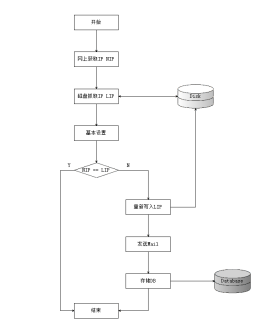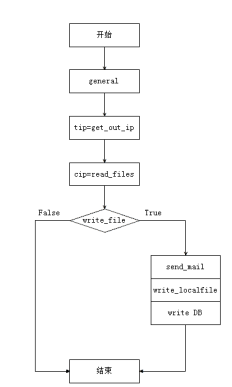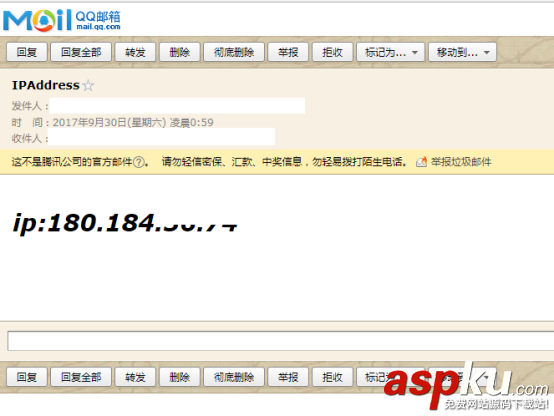0.預備知識
0.1 SQL基礎
ubuntu、Debian系列安裝:
root@raspberrypi:~/python-script# apt-get install mysql-server
Redhat、Centos 系列安裝:
[root@localhost ~]# yum install mysql-server
登錄數據庫
pi@raspberrypi:~ $ mysql -uroot -p -hlocalhostEnter password: Welcome to the MariaDB monitor. Commands end with ; or /g.Your MariaDB connection id is 36Server version: 10.0.30-MariaDB-0+deb8u2 (Raspbian)Copyright (c) 2000, 2016, Oracle, MariaDB Corporation Ab and others.Type 'help;' or '/h' for help. Type '/c' to clear the current input statement.MariaDB [(none)]>
其中,mysql是客戶端命令 -u是指定用戶 -p是密碼 -h是主機
創建數據庫、創建數據表
創建數據庫語法如下
MariaDB [(none)]> help create databaseName: 'CREATE DATABASE'Description:Syntax:CREATE {DATABASE | SCHEMA} [IF NOT EXISTS] db_name [create_specification] ...create_specification: [DEFAULT] CHARACTER SET [=] charset_name | [DEFAULT] COLLATE [=] collation_nameCREATE DATABASE creates a database with the given name. To use thisstatement, you need the CREATE privilege for the database. CREATESCHEMA is a synonym for CREATE DATABASE.URL: https://mariadb.com/kb/en/create-database/MariaDB [(none)]>創建數據表語法如下
MariaDB [(none)]> help create tableName: 'CREATE TABLE'Description:Syntax:CREATE [TEMPORARY] TABLE [IF NOT EXISTS] tbl_name (create_definition,...) [table_options] [partition_options]Or:CREATE [TEMPORARY] TABLE [IF NOT EXISTS] tbl_name [(create_definition,...)] [table_options] [partition_options] select_statement
創建數據庫ServiceLogs
MariaDB [(none)]> CREATE DATABASE `ServiceLogs`
創建數據表
MariaDB [(none)]> CREATE TABLE `python_ip_logs` ( `serial_number` bigint(20) NOT NULL AUTO_INCREMENT, `time` datetime DEFAULT NULL, `old_data` varchar(50) DEFAULT NULL, `new_data` varchar(50) DEFAULT NULL, PRIMARY KEY (`serial_number`)) ENGINE=InnoDB AUTO_INCREMENT=3 DEFAULT CHARSET=latin1
表內容的查詢
MariaDB [ServiceLogs]> select * from python_ip_logs; Empty set (0.00 sec)
0.2 python連接操作MySQL
模塊下載安裝
下載路徑: https://pypi.python.org/pypi/MySQL-python
安裝:
安裝:解壓unzip MySQL-python-1.2.5.zip進入解壓后目錄cd MySQL-python-1.2.5/安裝依賴apt-get install libmysqlclient-dev安裝python setup.py install如果為0則安裝OKecho $?
連接Mysql
root@raspberrypi:~/python-script# cat p_mysql_3.py #!/usr/bin/env pythonimport MySQLdbtry : conn = MySQLdb.connect("主機","用戶名","密碼","ServiceLogs") print ("Connect Mysql successful")except: print ("Connect MySQL Fail")root@raspberrypi:~/python-script#如果輸出Connect Mysql successful則說明連接OK
Python MySQL insert語句
root@raspberrypi:~/python-script# cat p_mysql1.py #!/usr/bin/env pythonimport MySQLdbdb = MySQLdb.connect("localhost","root","root","ServiceLogs")cursor = db.cursor()sql = "insert INTO python_ip_logs VALUES (DEFAULT,'2017-09-29 22:46:00','123','456')"cursor.execute(sql)db.commit()db.close()root@raspberrypi:~/python-script#執行完成后可以mysql客戶端SELECT語句查看結果
1.需求
1.1 需求
由于寬帶每次重啟都會重新獲得一個新的IP,那么在這種狀態下,在進行ssh連接的時候會出現諸多的不便,好在之前還有花生殼軟件,它能夠通過域名來找到你的IP地址,進行訪問,這樣是最好的,不過最近花生殼也要進行實名認證才能夠使用,于是乎,這就催發了我寫一個python腳本來獲取公網IP的沖動。
實現效果:當IP變更時,能夠通過郵件進行通知,且在數據庫中寫入數據
1.2 大致思路

1.3 流程圖


其他代碼均沒有什么好畫的
2.代碼編寫
2.1.1 編寫python代碼
getnetworkip.py
root@raspberrypi:~/python-script# cat getnetworkip.py #!/usr/bin/env python# coding:UTF-8import requestsimport send_mailimport savedbdef get_out_ip() : url = r'http://www.trackip.net/' r = requests.get(url) txt = r.text ip = txt[txt.find('title')+6:txt.find('/title')-1] return (ip)def main() : try: savedb.general_files() tip = get_out_ip() cip = savedb.read_files() if savedb.write_files(cip,tip) : send_mail.SamMail(get_out_ip()) except : return Falseif __name__=="__main__" : main()root@raspberrypi:~/python-script#savedb.py
root@raspberrypi:~/python-script# cat savedb.py#!/usr/bin/env pythonimport MySQLdbimport osimport timedirname = "logs"filename = "logs/.ip_tmp"def general_files(Default_String="Null") : var1 = Default_String if not os.path.exists(dirname) : os.makedirs(dirname) if not os.path.exists(filename) : f = open(filename,'w') f.write(var1) f.close()def read_files() : f = open(filename,'r') txt = f.readline() return (txt)def write_files(txt,new_ip) : if not txt == new_ip : NowTime = time.strftime("%Y-%m-%d %H:%M:%S", time.localtime()) old_ip = read_files() os.remove(filename) general_files(new_ip) write_db(NowTime,old_ip,new_ip) return True else: return Falsedef write_db(NowTime,Old_ip,New_ip) : db = MySQLdb.connect("主機","用戶名","密碼","庫名") cursor = db.cursor() sql = """ INSERT INTO python_ip_logs VALUES (DEFAULT,"%s","%s","%s") """ %(NowTime,Old_ip,New_ip) try: cursor.execute(sql) db.commit() except: db.rollback() db.close()root@raspberrypi:~/python-script#send_mail.py
root@raspberrypi:~/python-script# cat send_mail.py#!/usr/bin/env pythonimport smtplibimport email.mime.textdef SamMail(HtmlString) : HOST = "smtp.163.com" SUBJECT = "主題" TO = "對方的郵箱地址" FROM = "來自于哪里" Remask = "The IP address has been changed" msg = email.mime.text.MIMEText(""" <html> <head> <meta charset="utf-8" /> </head> <body> <em><h1>ip:%s</h1></em> </body> </html> """ %(HtmlString),"html","utf-8") msg['Subject'] = SUBJECT msg['From'] = FROM msg['TO'] = TO try: server = smtplib.SMTP() server.connect(HOST,'25') server.starttls() server.login("用戶名","密碼") server.sendmail(FROM,TO,msg.as_string()) server.quit() except: print ("Send mail Error")root@raspberrypi:~/python-script# print ("%s" %(line),end='')3.效果
收到的郵件如下:

利用SELECT查看表,效果如下:

把腳本放入crontab中,讓它執行定時任務即可
以上這篇Python之自動獲取公網IP的實例講解就是小編分享給大家的全部內容了,希望能給大家一個參考,也希望大家多多支持VEVB武林網。
新聞熱點
疑難解答